Asbestos and Kids
Once again another harmful product is being sold to families without their knowledge, asbestos has been found in the crayons of the three main manufacturers of children’s crayons: Crayola, Prang and Rose Art. Apparently, they use talc as a strengthener in making the crayons, since asbestos is found in talc, the crayons have asbestos in them. There are alternatives to talc and most likely they are not using for some profit margin reason, but of course the reason is unknown. The companies at first denied the presence of asbestos, but recently have admitted to the possibility and stopped production of the crayons to find out. There are still asbestos tainted crayons on the market, so perhaps we should use colored markers and pencils till they remedy the situation.
The Testing:
The company that did testing, a laboratory for the Seattle Post-Intelligencer, tested 8 brands of crayons and found that the three top sellers of crayons had higher than trace levels of asbestos in 80% of the tested crayons. The initials testing by the Post-Intelligencer, which was less sensitive then usually used, showed significant levels of asbestos in most of the sample. The P-I decided to test the crayons with a more sensitive method and found that of the 40 crayons tested from the brands, 80% were above trace level. In Crayola crayons, by far the most popular, The amount of asbestos ranged from .05 in Carnation Pink to 2.86% in Orchid. Prang’s results ranged from .3% in its Periwinkle to .54 % in its Yellow crayon. And finally Rose Art had .03% in a brown crayon and 1.20% in an orange crayon. To make sure the crayons were not contaminated locally/regionally, P-I bought crayons from around the country.
The laboratory also found that the asbestos fibers are the same asbestos fibers that the government and medical experts identify as cancer causing.
The Crayons are Certified non-toxic, aren’t they?
The crayon makers certify their product as non-toxic through an institute called Arts and Creative Materials Institute. The Arts and Creative Materials Institute is a member ship organization of about 25 companies who produce 100 art products. These members pay anywhere from $450 to 41,000 to be members. The price depends on the size and output of the company. The manufacturers of crayons in foreign countries that are not part of this Institute passed the testing with flying colors. There was no asbestos found in them.
Unfortunately the article did not give the names of these manufacturers or what they use in their crayons as an alternative. This institute tests crayons to ensure that they are non-toxic. According to the institute’s toxicologist, Dr. Woodhall Stopford, ” We don’t analyze crayons for asbestos and doubt that we ever will”. The institute insists that there is no asbestos in the crayons and somehow the testing by P-I is flawed, even though the institute already admitted it does not test for asbestos. Stopford continued to say “I basically don’t allow any detectable asbestos in any product that I certify”, but then added, “We don’t analyze talc for asbestos that goes into crayons because I’m not aware of any talc in our program that had asbestos in it. Now how does he know that when he hasn’t tested talc for asbestos. One can simply pick up a container of talc powder and read the warning “do not allow powder in babies face, can cause breathing difficulties”. This is because of the asbestos in talc. The institutes executive director Debbie Fanning answered when asked how she knows the crayons are not contaminated: “There is now asbestos in crayons, the toxicologist evaluates the products and if there was asbestos in crayons, he’d be right on top of that. We check for lead in crayons and asbestos is that much worse.” How can a company that certifies crayons as non-toxic reconcile these two statements? The answer is they can’t.
What the doctors and experts think?
The doctors’ major worries are that there is no body of research to pull from to say it is safe to eat asbestos. They think that since it is labeled as a carcinogen that it is harmful and should be taken out. Although the doctors are concerned the amount of asbestos in the crayons, it is far less than the amount that miners were exposed to, which many died from. Considering that crayon shavings and flecks of crayons are lurking in every crayon box or container, it is a real possibility that children could inhale the crayon and, in turn, inhales the asbestos. A Yale University study documented that the aroma of crayons is among the country’s 20 most recognizable smells. The unknown danger is that if the children inhale a fleck of crayon, will their body heat melt the wax and expose their young lungs to asbestos?
There was an evaluation of the threat of ingesting asbestos done in 1987. The Department of Health and Human Services gathered a team of experts from the EPA, CDC, NIOSH and OSHA and evaluated 11 studies on ingestion done over the previous 20 years. The report conclude “The potential hazard should not be discounted, and ingestion exposure to asbestos should be eliminated whenever possible.” With the prices that manufactures pay to have their products certified as non-toxic, one would think that they would test the product according to its ingredients. Talc has asbestos in it. When they test the crayons knowing they have talc as an ingredient, they should be testing for the asbestos. The problem is that asbestos is not a banned material. It was originally banned, but later the courts threw out the ban and the EPA never tried to reinstate the ban. It is, however, labeled as a carcinogen. The manufacturers are attempting to say that it only harms the lungs if inhaled and not if it is ingested. Well public health experts, pediatricians and asbestos specialists are outraged at the findings of the testing, and since they are worried should we as parents be worried?
Here is what some had to say:
Dr. Michael McCann, a chemist and industrial hygienist who founded and directed New York’s Center for Safety in the Arts, said ” Once an issue like this is raised, it’s up to the industry to prove it’s safe, not the other way around. I don’t believe that products are innocent until proven guilty.” He also said, ” The crayon particles can get into the lungs in the form where it can do damage. I would be concerned about what happens to it there. Is the asbestos covered by wax? Does the child’s body temperature melt the wax? There are lots of questions which must be answered and answered promptly.”
Dr. Micheal Harbut , director of the Center for Occupational and Environmental Medicine in Detroit said, “The metabolism of a young child is such that they are even more sensitive to toxins. Levels of asbestos exposure that would do minimal harm to an adult can cause serious disease in a child after the latency period has run its course.”
Finally, Dr. Alan Ducatman, professor of medicine at West Virginia University School of Medicine said, “The risk is real, if there’s inhalation of asbestos it has been demonstrated time and time again that there is a risk. It’s possible the risk is small, but there is a risk.”
We should hold crayon manufacturers accountable. We should immediately throw out all crayons and not buy them again till this problem is resolved. We should also call the three major manufacturers of the crayons and ask them to get rid of the asbestos. These numbers will be provided at the end of the article.
Although the risk from ingestion is small and the risk of inhalation is slightly higher, I think it should be of great concern to parents whose children have day in and day out exposure to the asbestos found in crayons. It is time to tell manufacturers that no longer should our children’s health be attacked for profit.


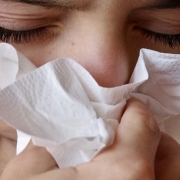
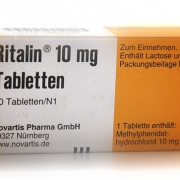
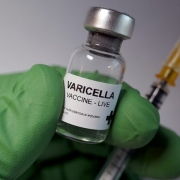
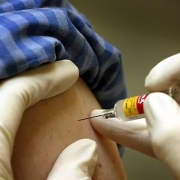
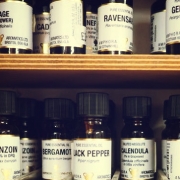

Hey there, I just wanted to let you know that I have linked your website with do follow link so my surfers can see your blog. I visit to your site on a pretty regular basis, and I have realized that since I enjoy your website, others will too. You can find the link to your online portal here: http://asbestosaremesothelioma.com/greatwebsites/ Thanks and keep on blogging!